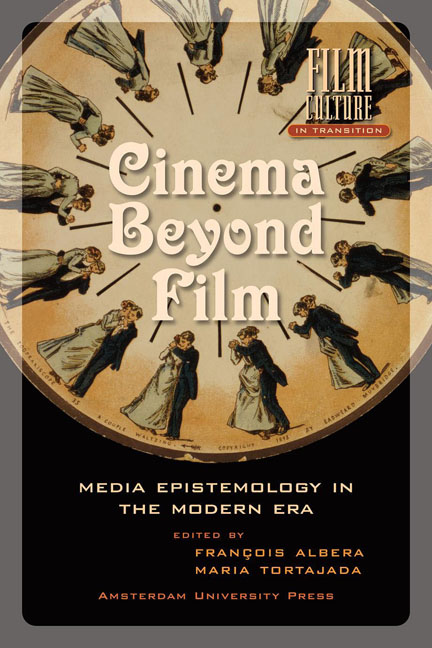The ‘Cinematographic Snapshot’: Rereading Etienne-Jules Marey
Published online by Cambridge University Press: 22 January 2021
Summary
The background to our discussion is the opposition between photography and cinema: between the fixed image and the image in movement. In 1970, when Roland Barthes attempted to pin down the specific nature of cinema in the photogram – the fixed image that must be assembled as a series for cinematographic projection – he underlined that his approach was an original one. He wrote that it went against ‘everyday opinion’, which identifies the projected movement of images as the ‘sacred essence’ of cinema. There is no shortage of references supporting what today still seems to be the predominant ‘idea’ of cinema, and where the influence of Bergsonism can be felt. In this vision, movement is seen as continuity. André Bazin and Gilles Deleuze adopted this approach, leaving their imprint on cinema theory. Bazin deemed cinema superior to photography, as for him, film takes on the impression of movement. Deleuze concentrates on what he calls the ‘mean image’, which is comprised of continuity and flux, as opposed to the ‘still cuts’ of the photograms.
In order to conjure up the illusion of continuous movement in the cinema, a series of photographic images were projected very quickly. It can thus be said that photography is an integral part of the cinematographic dispositive. Photography also played a key role in the way cinema came into being. Etienne-Jules Marey played a vital part in this process. His work on chronophotography laid the technical and theoretical foundation for the synthesis of movement. By mastering the technique of the snapshot, he conceived of a kind of ‘cinema’ that was determined by his conceptual and methodological premises. This state of the ‘cinema’, as actualized in symbolic and discursive terms, in turn leads to the construction of an ‘idea’ of photography. Even if the development of what was known as ‘animated photography’ is a sine qua non of the cinematograph, the key difference between the cinematograph and photography is not simply the illusion of movement. An epistemological approach reveals that the two procedures can already be distinguished in the very status of the photographic image that is specific to each – the photogram is a snapshot whose nature is a paradoxical one.
- Type
- Chapter
- Information
- Cinema Beyond FilmMedia Epistemology in the Modern Era, pp. 79 - 96Publisher: Amsterdam University PressPrint publication year: 2012



